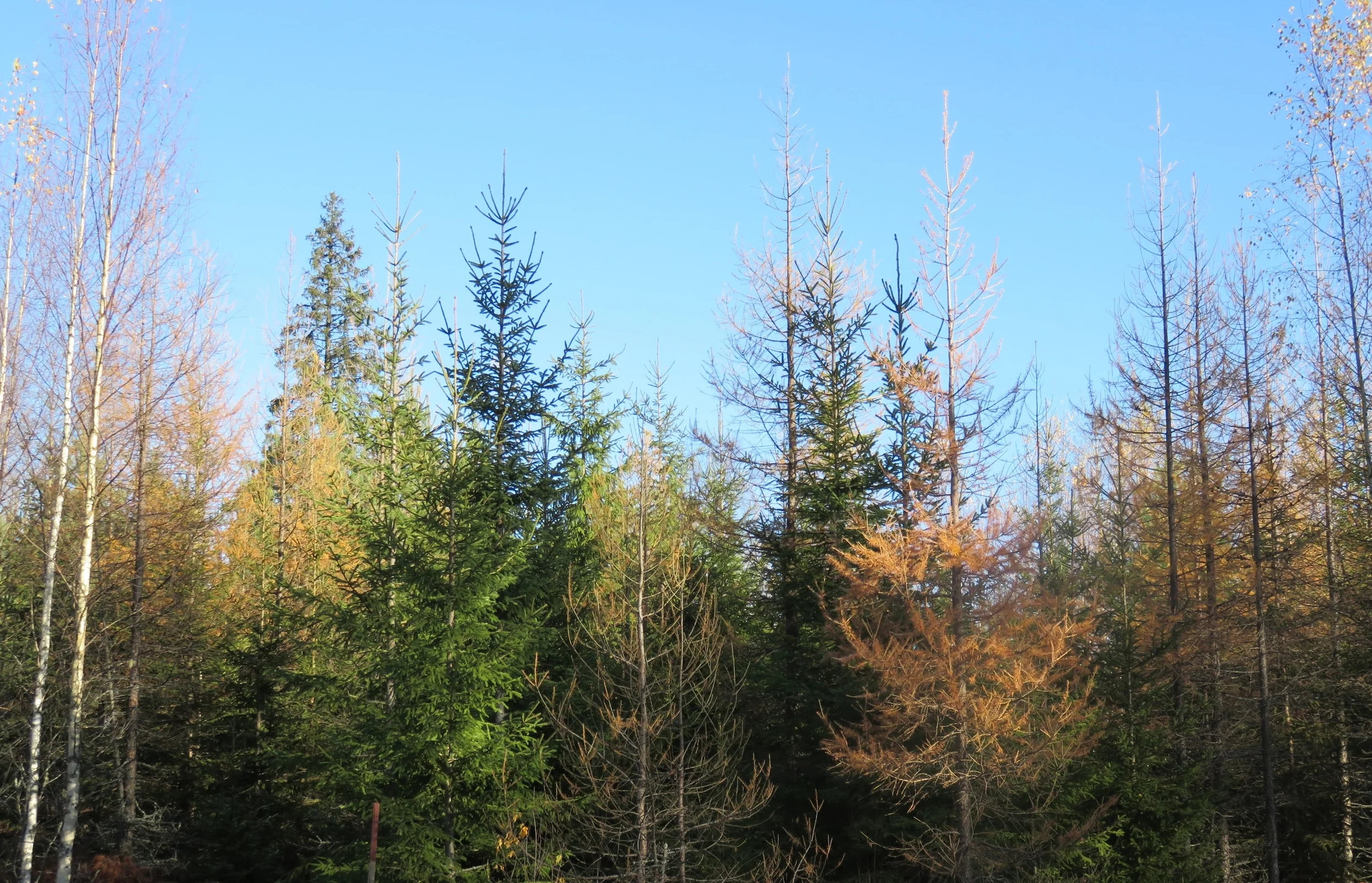The rapid loss of biodiversity due to human activities alters ecosystem functioning and ecosystem services. Ecosystem functioning usually declines as species richness is reduced and the ecosystem consequences of biodiversity loss are quantitatively comparable to the direct effects of other global environmental stressors. But there are still several knowledge gaps in our understanding of biodiversity-ecosystem functioning relationships. In particular, sound scientific evidence of the impact of changes in tree species and genetic diversity on forest ecosystem functioning and ecosystem services is still lacking and forest ecosystems have been largely excluded from the early biodiversity – ecosystem functioning studies.
Tree species diversity in boreal forests is relatively low compared to temperate and tropical forests, and therefore addition or loss of a single tree species may be expected to have larger effects on ecosystem functioning as compared to other forest biomes. Genetic diversity effects are also predicted to be particularly strong in ecosystems dominated by a few habitat-providing foundation species. Therefore, boreal forests provide a good system to study the comparative role of tree species and genetic diversity effects on ecosystem functioning.
In this project, we use two long-term experiments established by our research team in boreal forests of Satakunta, SW Finland to understand the effects of trees species diversity, tree species composition and intraspecific genetic diversity on ecosystem functioning and ecosystem services. The Satakunta experiments are part of the global network of tree diversity experiments TreeDivNet and, to our knowledge, are the only existing forest diversity experiments in boreal forest zone established specifically for studying the link between forest diversity and ecosystem functioning and exploring the effects of both inter- and intraspecific diversity.
We aim to develop a multifunctional approach by considering the effects of tree species and genetic diversity on both above and belowground ecosystem processes (Figure 1). Our research will provide evidence as to the effectiveness of conservation of biodiversity (of both genotypes and species) in relation to ecosystem function and will inform the decision-makers on the relative benefits of tree species and genetic diversity in woodlands.
Figure 1 : Direct (solid arrows) and indirect (dashed arrows) effects of tree species and genetic diversity on above- and belowground processes.







